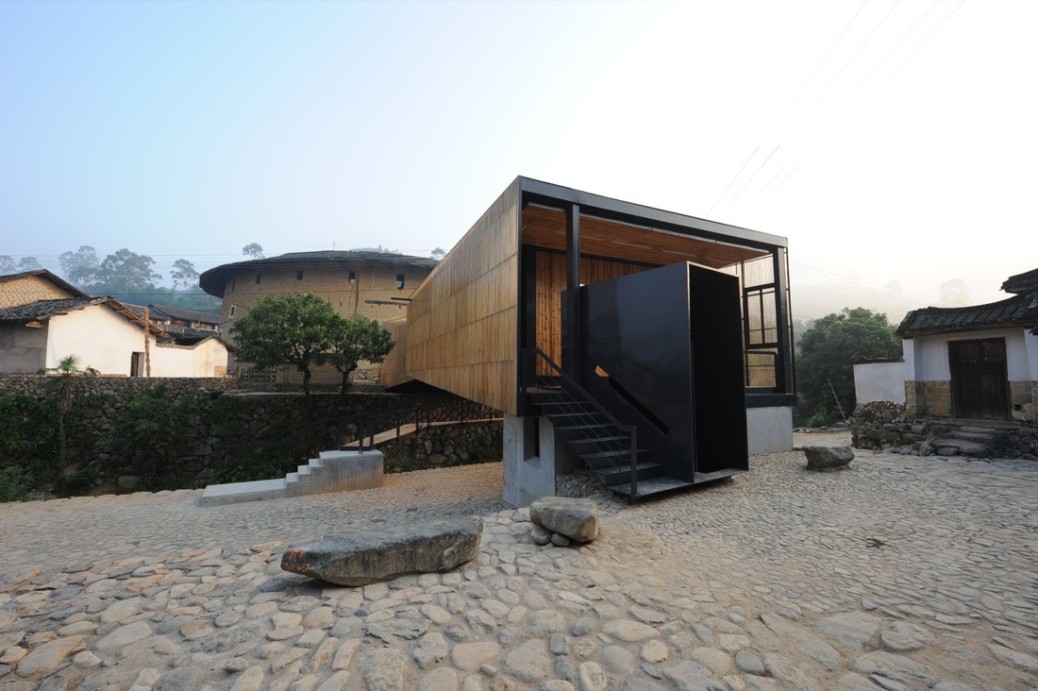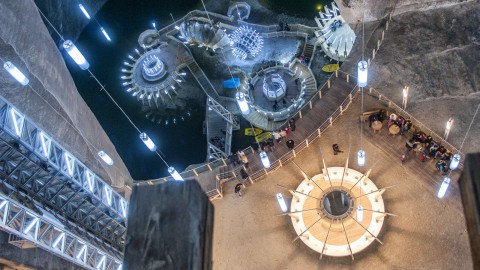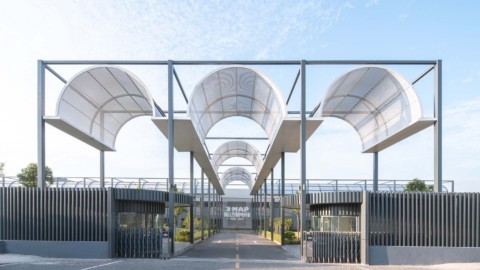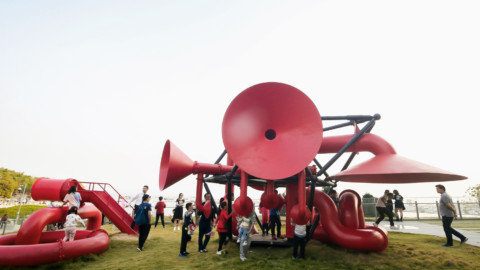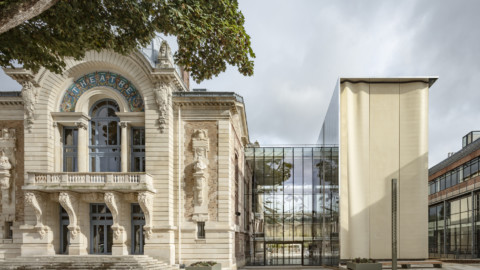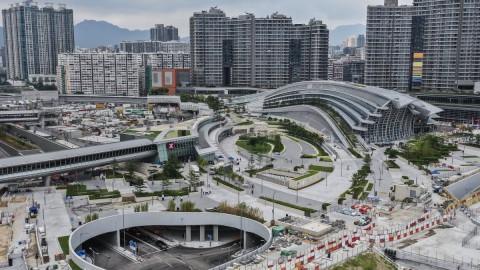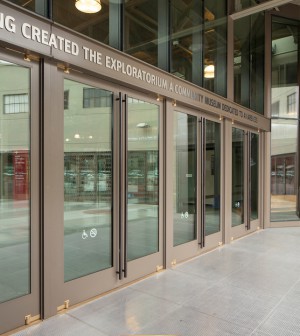Architects: Li Xiaodong Atelier
Area: 240 m²
Year: 2009
Photographs: Li Xiaodong
建築師:李曉東工作室
面積:240平方米
年:2009
攝影:李曉東
Located at a remote village, Fujian Province in China, the project does not only provides a physical function – a school + a bridge, but also presents a spiritual centre. The main concept of the design is to enliven an old community (the village) and to sustain a traditional culture (the castles and lifestyle) through a contemporary language which does not compete with the traditional, but presents and communicates with the traditional with respect.
該項目位於中國福建省的一個偏遠村莊,不僅提供體育功能-學校+橋樑,而且還提供精神中心。 該設計的主要概念是通過一種與傳統語言不競爭的現代語言來振興一個古老的社區(村莊),並維持一種傳統文化(城堡和生活方式),但要尊重傳統語言並與傳統語言進行交流。
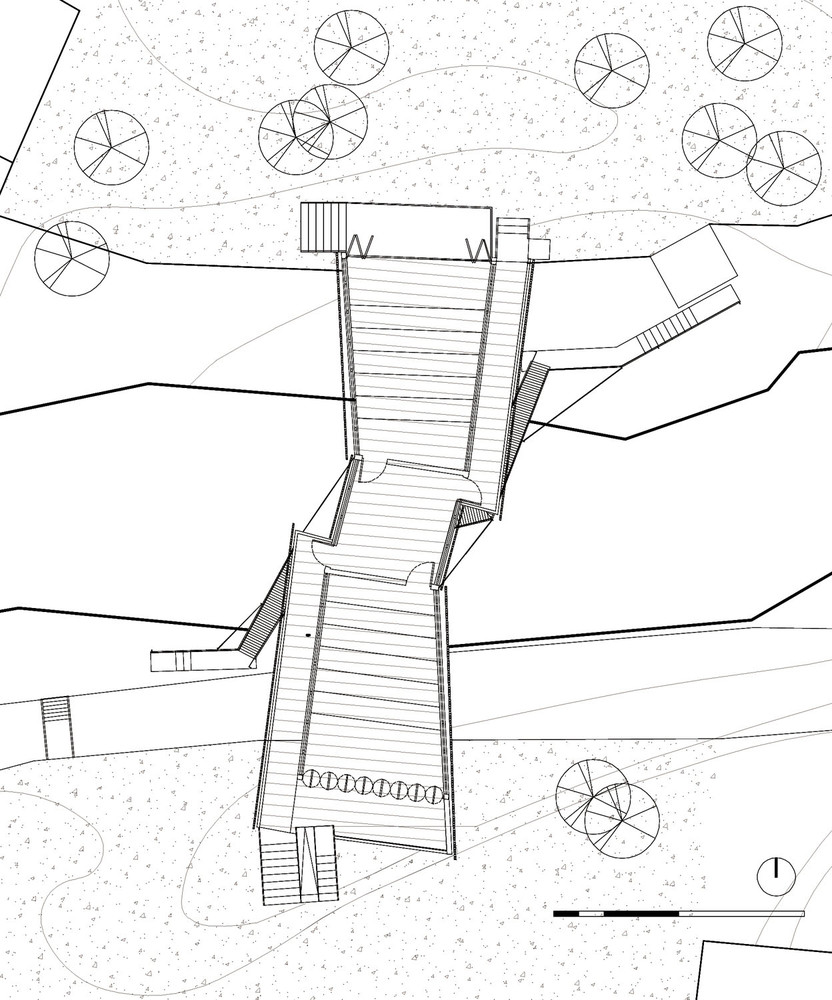
It is done by combining few different functions into one space – a bridge which connects two old castles cross the creek, a school which also symbolically connects past, current with future, a playground (for the kids) and the stage (for the villagers).
它是通過將幾個不同的功能組合到一個空間中來完成的:連接小河兩座古老城堡的橋樑,象徵性地連接過去,現在和未來的學校,操場(供兒童使用)和舞台(供村民使用) 。
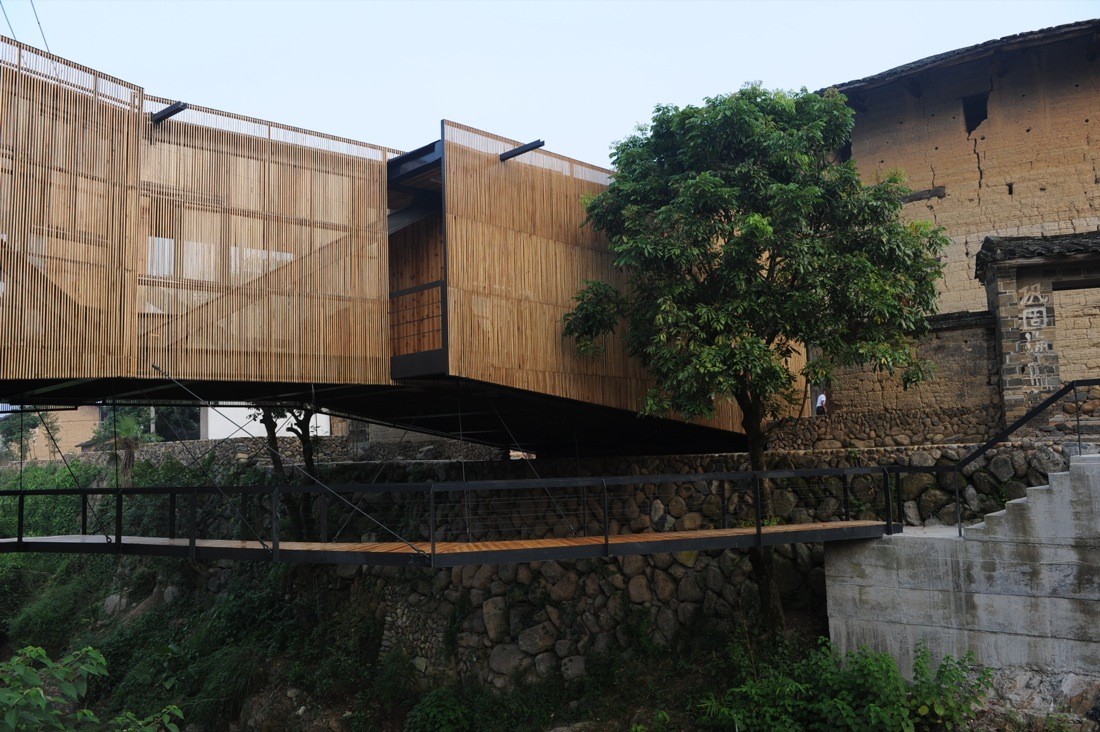
The ‘Bridge School’ bridges the two parts of the small village of Xiashi that lie on either side of a small creek running about ten metres below the village. The structure is created by two steel trusses that span the creek with the space between them, housing the functions of the school. Suspended from the structure and running below it is a pedestrain bridge for the people of the village to use. Small and modern in design with no reference to the area’s traditional building style, the school, nonetheless, becomes the physical and spiritual centre of what was a declining village. Placed in such a way that it addresses its surroundings, the Brige School connects two villages together, providing a central, social space. The broader social aspect of the project was part of the brief which was developed to answer community needs rather than simply those of a primary school. A public library separates the two classrooms and open stages at either ends of the building enable performances. The result is a project that has successfully invigorated the entire community, encapsulating social sustainability through architectural intervention.
“橋樑學校”架起了下什夏小村莊的兩個部分,這兩個小村莊位於一條小河的兩邊,小河在村莊下方十米處延伸。該結構由兩個橫跨河道的鋼桁架創建,它們之間具有空間,容納了學校的功能。懸在結構下方的是一座人行天橋,供村民使用。學校既小巧又現代,並沒有考慮該地區的傳統建築風格,但它卻成為了這個正在衰落的村莊的物質和精神中心。布里奇學校的佈置方式使其能夠與周圍環境相呼應,將兩個村莊連接在一起,提供了一個中心的社交空間。該項目的更廣泛的社會方面是摘要的一部分,該摘要旨在回答社區的需求,而不僅僅是小學的需求。公共圖書館將兩個教室隔開,並且在建築的兩端開放了舞台,可以進行表演。結果是,該項目成功振興了整個社區,並通過建築干預封裝了社會可持續性。
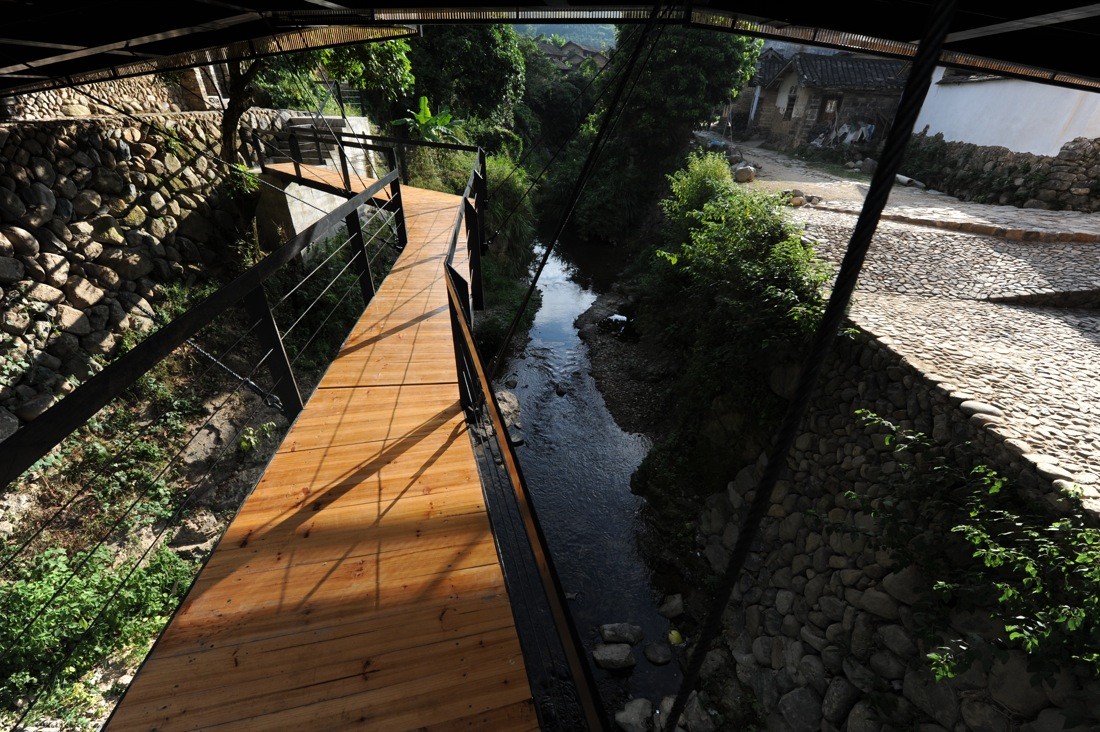
In practice since 1997, Li Xiaodong is one of a rarer breed of Chinese architects. Less concerned with aping Western models, Li’s work focuses on how the nuances of place and vernacular tradition can inform an identifiably modern and authentic Chinese architecture. ‘Precedents of past experience and knowledge are important,’ says Li. ‘They provide a solid basis from which to solve new problems.’ Though it often seems that a sense of history has been carelessly cauterised in China’s dash for growth, Li attempts to nurture physical and experiential connections with the past.
從1997年開始實踐,李曉東是中國建築師中稀有的一種。 李先生的作品不再像西方模型那樣受關注,而是關注地點和當地傳統的細微差別如何為可識別的現代和地道的中國建築提供信息。 李說:“過去的經驗和知識的先例很重要。” “他們為解決新問題提供了堅實的基礎。”儘管李常似乎粗暴地在中國對增長的衝刺中熏陶了一種歷史感,但李麗麗試圖與過去建立起物質和經驗上的聯繫。
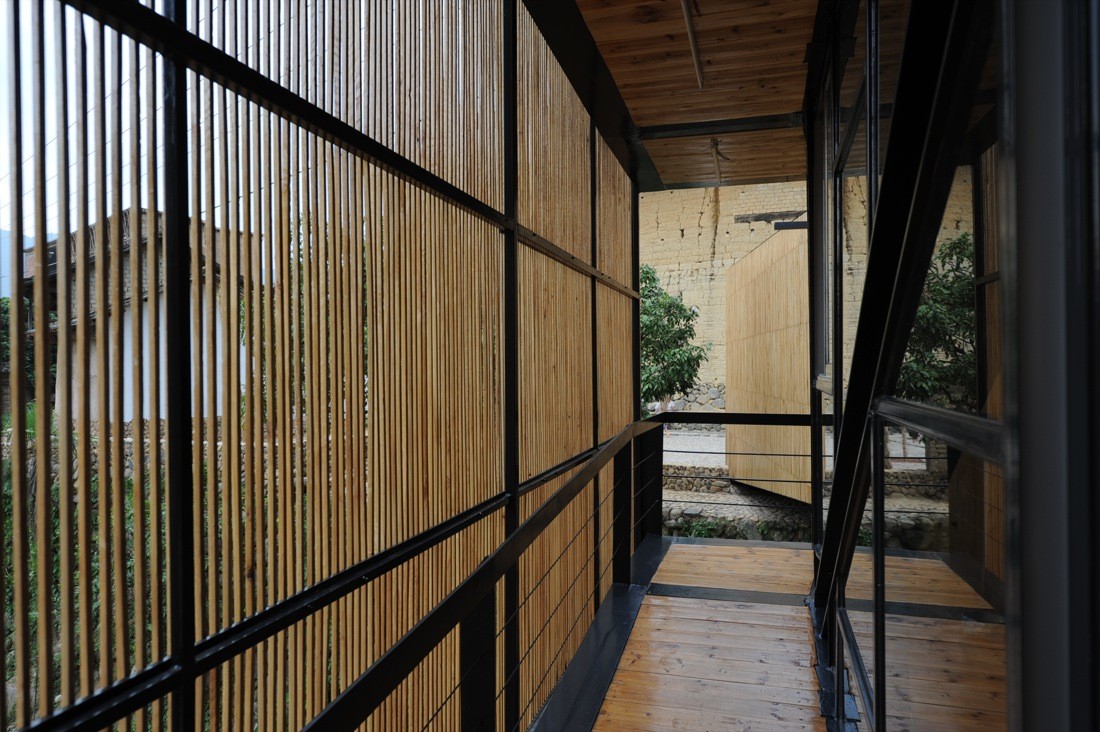
He’s also not averse to working on the social and geographic margins. An earlier project for a school and community centre for the Naxi people near Linjiang, proved how local materials, technology and building forms can be synthesised into a memorable, contemporary language. The project was also highly commended in the 2005 AR Awards (AR December 2005).
他也不反對在社會和地理邊緣上工作。 一個較早的項目是為臨江附近的納西族人建立的學校和社區中心,該項目證明瞭如何將當地的材料,技術和建築形式合成為一種令人難忘的當代語言。 該項目還獲得了2005年AR大獎(2005年12月,AR)的高度讚揚。
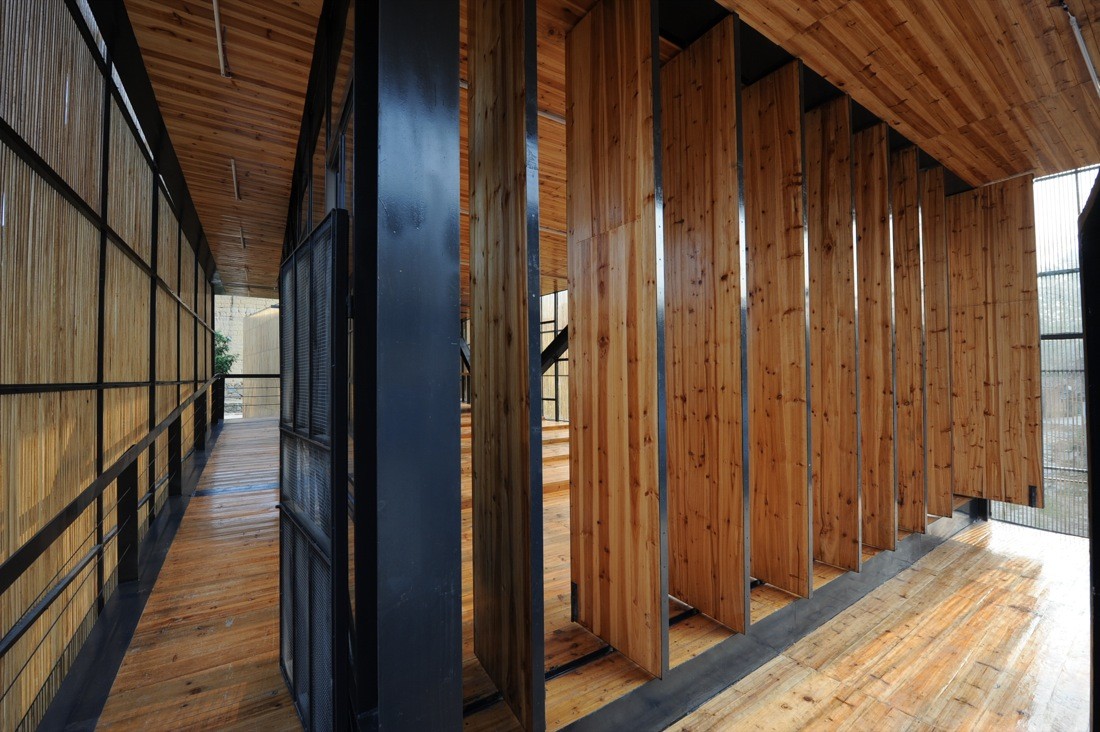
This year, Li goes one better as one of four principal prize winners. His project for a school in Xiashi, a remote village in Fujian Province, has programmatic echoes of the Naxi community centre, but the architectural result is quite different. Here, a lightweight structure traverses a moat-like creek in a single, supple bound, compared with the rooted, more solid aesthetic of the Linjiang building with its thick stone walls.
今年,李在四位主要獲獎者之一中表現更好。 他在福建省偏遠鄉村下石鎮的一所學校的項目與納西社區中心有著程序上的呼應,但建築效果卻大不相同。 在這裡,輕巧的結構在一條單一的,柔軟的邊界中穿行於一條護城河般的小溪,而厚厚的石牆使林江建築的根源更加牢固。
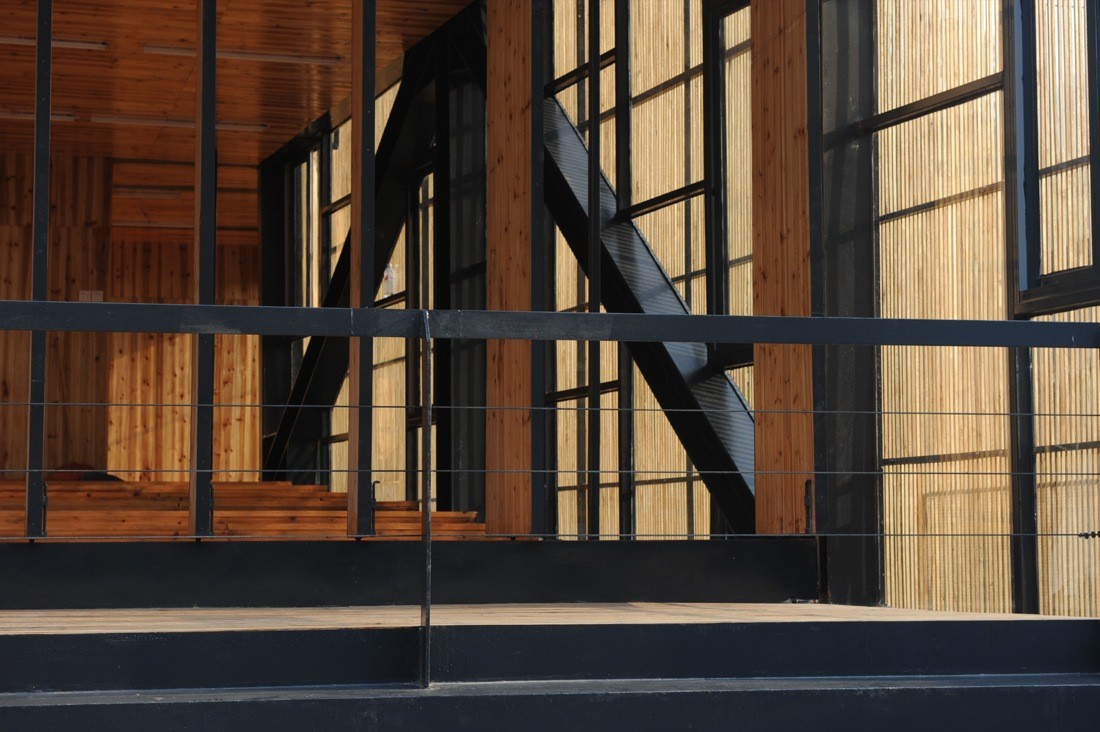
Essentially, it’s an intelligent, contemporary take on the archetype of the inhabited bridge. Supported on concrete piers, the simple steel structure acts like a giant box girder that’s been slightly dislocated, so the building subtly twists, rises and falls as it spans the creek. Inside are a pair of almost identical, wedge-shaped classrooms, each tapering towards the mid point of the structure. Although it’s possible to use the building as a bridge, a narrow crossing suspended underneath the steel structure and anchored by tensile wires offers an alternative and more direct route.
從本質上講,這是對居住橋原型的一種明智而現代的嘗試。 支撐在混凝土墩上的簡單鋼結構就像一個稍微錯位的巨型箱形梁,因此建築物橫跨小溪時會巧妙地扭曲,上升和下降。 內部是一對幾乎完全相同的楔形教室,每個教室都朝著結構的中點逐漸變細。 儘管可以將建築物用作橋樑,但懸於鋼結構下方並由拉力繩錨固的狹窄十字路口提供了另一種更直接的路線。
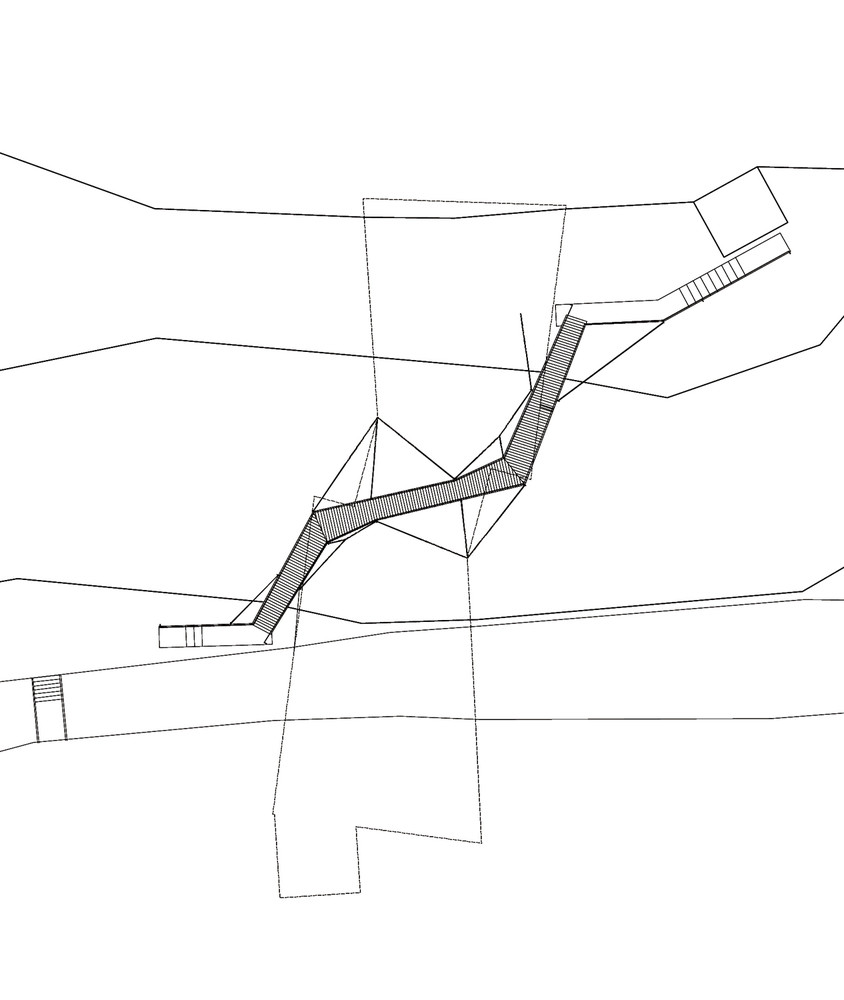
Catalysing a sense of place and history, Li Xiaodong sees the project as more than just a school, but a social centre for the entire village. Physical lightness and spatial fluidity are key. By a means of sliding and folding doors, the school can be transformed into an impromptu theatre or play structure. The steel frame is wrapped in a veil of slim timber slats, which filter light and temper the interior with cooling breezes – Fujian, on China’s south-east coast, has a humid, subtropical climate.
李曉東在感受地方和歷史的同時,將項目視為不僅僅是一所學校,而是整個村莊的社交中心。 身體輕盈和空間流動性是關鍵。 通過推拉門和折疊門,學校可以轉變為即興的劇院或遊樂設施。 鋼框架包裹在細長的木板條中,這些木板條可以過濾光線並通過涼風將內部調溫。福建位於中國東南沿海,屬亞熱帶濕潤氣候。
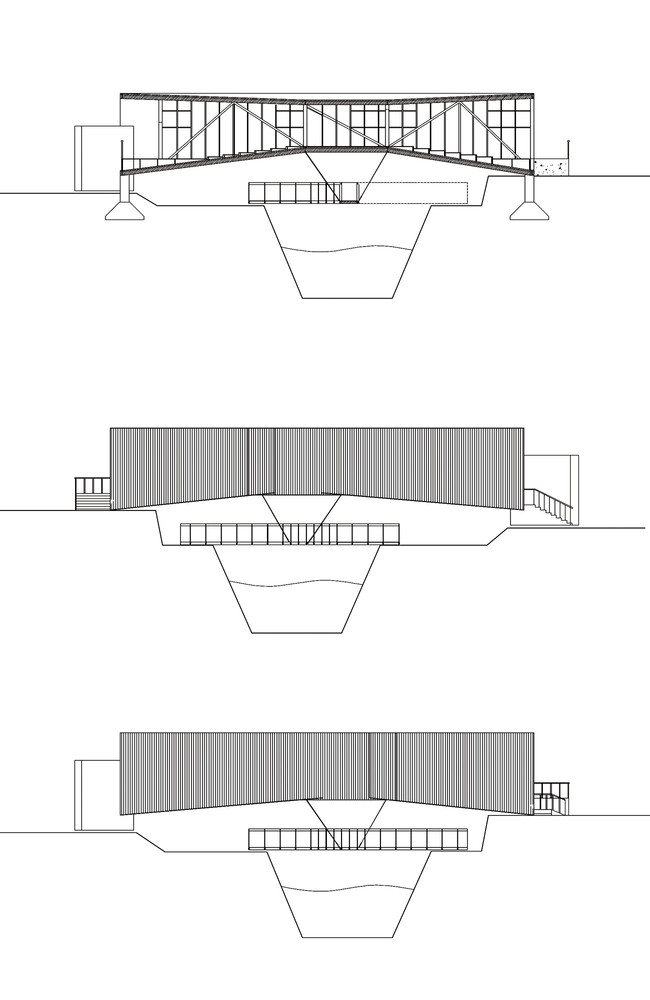
Originally constructed by ancestors of the local Hakka people, these distinctive circular fortresses have thick, imperforate walls of rammed earth.
The jury was unanimously impressed by the clarity and grace of the new architecture, while also admiring its potential to transform life in China’s rural margins.
這些獨特的圓形堡壘最初由當地客家人的祖先建造,有厚厚的,無孔的夯土牆。
陪審團一致對新建築的清晰度和優雅印象深刻,同時也讚歎了其在中國農村邊緣地區改變生活的潛力。
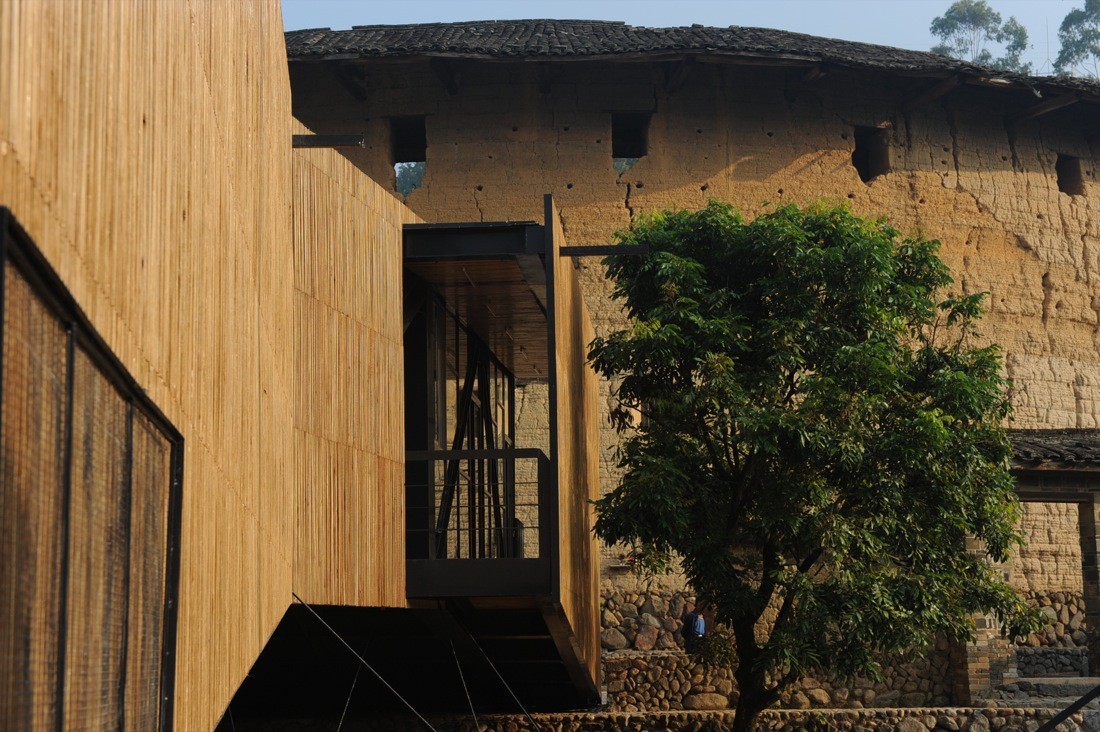
https://www.archdaily.com/45409/school-bridge-xiaodong-li
https://architizer.com/projects/bridge-school/
Don’t you think it’s addictive?
Want to know more about the beauty of architecture?
Come and join our members to explore the beauty of architectural design.
覺得看得不過癮嗎?
想要知道更多建築之美嗎?
快來加入我們的會員,一同探索建築設計之美。
The above article is purely for appreciation and sharing purposes, as well as the construction of new technology and the public can be in-depth understanding of the information at the same time there are sources, will be able to query, no use of the document as a commercial transaction, if illegal, please inform the We will immediately remove the site, thank you for cooperation.
以上文章純粹作為欣賞及分享用途,以及將建築新型技術傳遞給與大眾能夠深入了解,同時資料還有來源,將可查詢,絕無使用該文件資料作為商業交易行為,如有違法請務必告知該網站我們將立即處理撤除,謝謝合作。

